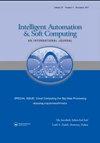PCN2:平行CNN从x线片和元数据诊断COVID-19
IF 2
4区 计算机科学
Q2 Computer Science
引用次数: 1
摘要
COVID-19是几个世纪以来困扰人类的破坏性大流行病之一;在其出现后约18个月内,累计确诊病例达到1.73亿,死亡人数接近372万。尽管全球公众可以获得几种疫苗,但COVID-19的传播速度及其不同的突变株阻碍了阻止其爆发。这反过来又促使人们迫切需要设计出快速、廉价和准确的工具,通过这些工具可以在疾病的早期阶段进行诊断。逆转录聚合酶链反应(RTPCR)检测是检测COVID-19症状的主要工具。然而,由于该测试的假阴性率很高,医生通常使用胸片作为辅助或替代工具。尽管x光片筛查广泛,成本低,结果及时,但依赖放射科医生手动解释它们不利于使用x光片作为诊断工具。基于加快新冠肺炎影像学诊断速度和提高诊断可靠性的需要,本文提出了一种新的深度学习框架——并行深度神经网络新冠肺炎诊断(PCN2)。PCN2通过并行运行两个cnn同时处理x光片及其元数据。首先,利用二维CNN (2DCNN)在该领域的超强能力从x线照片中捕获空间信息。其次,利用一维CNN (1DCNN)提取元数据中呈现的医学知识。通过这种整合,PCN2甚至可以对早期疾病、与其他标记物混淆或与其他疾病重叠导致x线片感染征象不明确的病例进行完美的分类。使用多个数据集对PCN2进行的广泛评估显示,平均诊断准确率为99.9和0.99 f1分。本文章由计算机程序翻译,如有差异,请以英文原文为准。
PCN2: Parallel CNN to Diagnose COVID-19 from Radiographs and Metadata
COVID-19 constitutes one of the devastating pandemics plaguing humanity throughout the centuries;within about 18 months since its appearing, the cumulative confirmed cases hit 173 million, whereas the death toll approaches 3.72 million. Although several vaccines became available for the public worldwide, the speed with which COVID-19 is spread, and its different mutant strains hinder stopping its outbreak. This, in turn, prompting the desperate need for devising fast, cheap and accurate tools via which the disease can be diagnosed in its early stage. Reverse Transcription Polymerase Chain Reaction (RTPCR) test is the mainstay tool used to detect the COVID-19 symptoms. However, due to the high false-negative rate of this test, physicians usually use chest radiographs as an adjunct or alternative tool. Although radiographs screening is wide-available, low-cost, and its results are timely, relying on radiologists to interpret them manually stands against using radiographs as a diagnostic tool. Motivated by the need to speed up the radiographic diagnosis of COVID-19 and to improve its reliability, this paper proposes a novel deep-learning framework dubbed Parallel Deep Neural Networks for COVID-19 Diagnosis (PCN2). PCN2 treats the radiographs and their metadata simultaneously by running two CNNs in parallel. Firstly: a 2-dimensional CNN ( 2DCNN) to capture the spatial information from the radiographs due to its super competency in this domain. Secondly, a 1-dimensional CNN (1DCNN) to extract the medical knowledge presented in the metadata. By this integration, PCN2 can make perfect classifications even for those cases in which the infection signs in radiographs are unclear due to being the disease in early-stage, confounded by other markers or overlapped by other diseases. Extensive assessments of PCN2 carried out using several datasets demonstrate average diagnostic accuracy of 99.9 and 0.99 F1-score.
求助全文
通过发布文献求助,成功后即可免费获取论文全文。
去求助
来源期刊

Intelligent Automation and Soft Computing
工程技术-计算机:人工智能
CiteScore
3.50
自引率
10.00%
发文量
429
审稿时长
10.8 months
期刊介绍:
An International Journal seeks to provide a common forum for the dissemination of accurate results about the world of intelligent automation, artificial intelligence, computer science, control, intelligent data science, modeling and systems engineering. It is intended that the articles published in the journal will encompass both the short and the long term effects of soft computing and other related fields such as robotics, control, computer, vision, speech recognition, pattern recognition, data mining, big data, data analytics, machine intelligence, cyber security and deep learning. It further hopes it will address the existing and emerging relationships between automation, systems engineering, system of systems engineering and soft computing. The journal will publish original and survey papers on artificial intelligence, intelligent automation and computer engineering with an emphasis on current and potential applications of soft computing. It will have a broad interest in all engineering disciplines, computer science, and related technological fields such as medicine, biology operations research, technology management, agriculture and information technology.
 求助内容:
求助内容: 应助结果提醒方式:
应助结果提醒方式:


